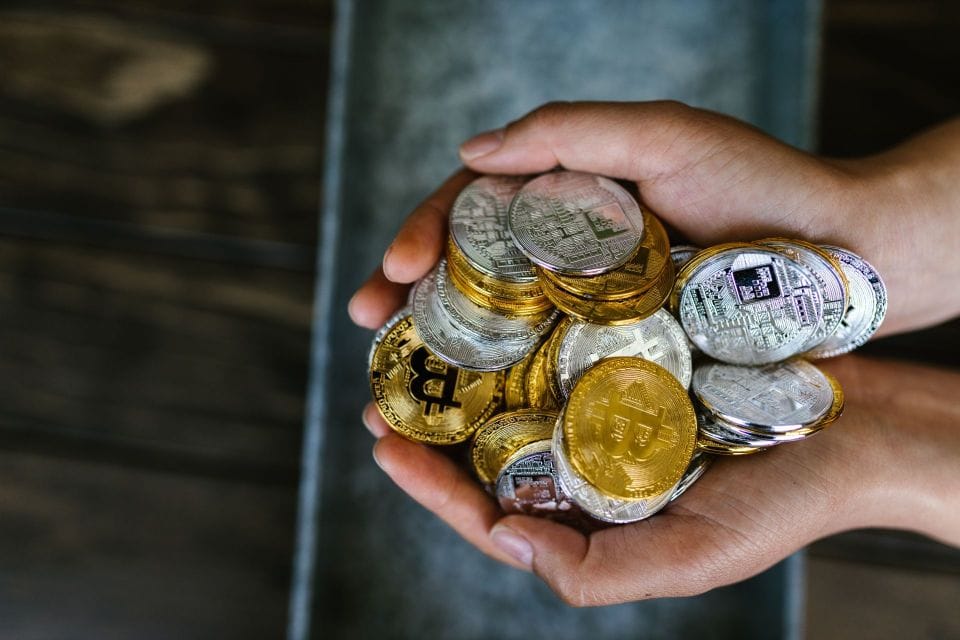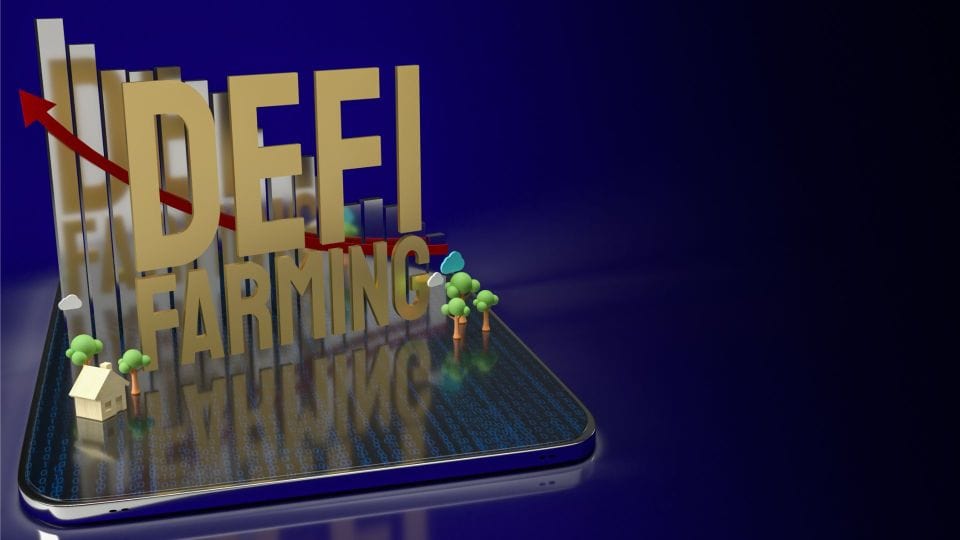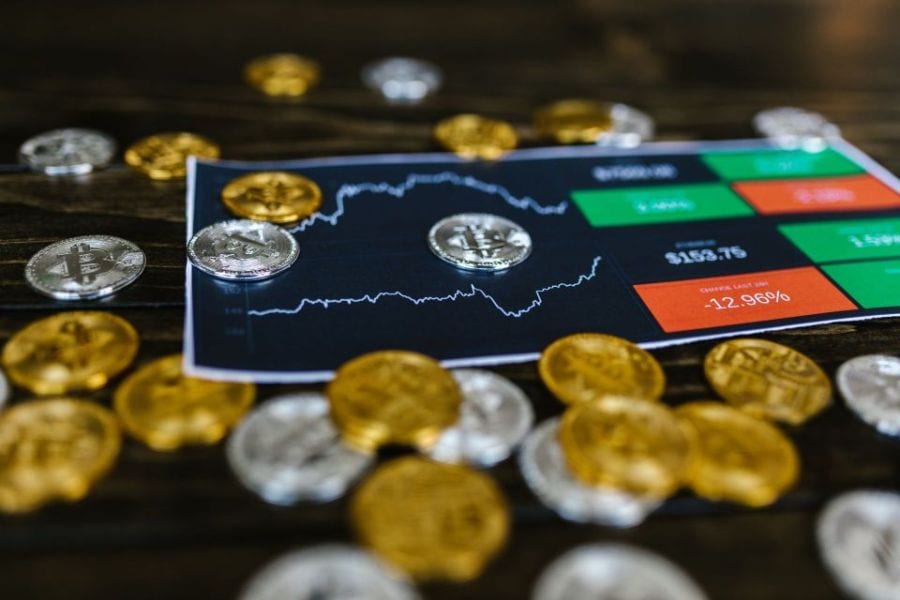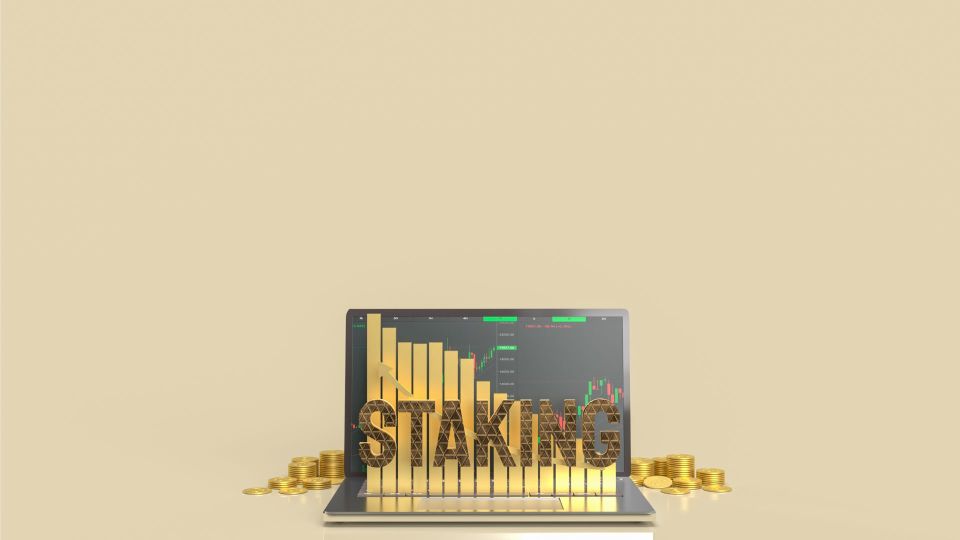The world of crypto keeps growing. Not just in terms of market value, but also in terms of emerging new ways to use blockchain technology. This always brings new opportunities in business and finance, attracting investments and paving the road for even newer applications of the blockchain. It also enables many new ways to make money in crypto.
Two of the money-making methods that are becoming more and more prevalent are yield farming and staking. They’re both passive ways of generating income with some important similarities – some even claim that they’re interchangeable or that staking is just another form of yield farming. However, there are also some crucial differences between the two, mostly because of the different purposes they have on the blockchain networks.
Moreover, these two concepts also have something in common with investing or depositing money in a regular bank. Banks offer passive income for those who are eager to deposit their cash for a certain period of time. But the yields from staking and yield farming are much higher, thanks to the technology that enables them and the decentralized nature of the network.

Yield farming
What is yield farming?
Let’s start with yield farming. Yield farming includes a number of different earning methods, all based on various DeFi (decentralized finance) protocols.
The name comes from the capability of the invested funds to quickly grow and bring huge yields. You just plant the seed of a smart initial investment or a loan and watch your income grow exponentially. However, just like in real farming you can’t quite just plant the seed and do nothing if you want to maximize the returns. You’ll have to be researching the market constantly, keep reevaluating your options, and make necessary interventions whenever you detect better opportunities.
Before going into more details about yield farming, let’s just take a quick look at what DeFi protocols and applications are.
DeFi technology
DeFi, as it was mentioned, stands for decentralized finance. Now, one could think that this refers to all crypto technology, as decentralization does sit at the heart of the concept of a distributed network.
However, DeFi introduces another layer of decentralization on top of this. For instance, common crypto exchanges such as Binance use order books, and their users basically first transfer their funds to the exchange, and only then the trade happens on the app. So your money has to effectively go through the exchange platform which acts as an intermediary.
With DeFi, there’s no such thing as a middle man. There’s only a pool of funds regulated by a smart contract that determines all the conditions of lending, borrowing, and trading with the pool. It works on a peer-to-peer principle where users provide the funds and get a reward for that, but the app itself doesn’t hold any of this money at any point – it only provides the place to store it and the rules of its redistribution.
In essence, decentralized apps (Dapps) such as decentralized exchanges or lending and borrowing protocols do the job that banks normally do. Centralized crypto exchanges and apps are usually registered companies that fall under the jurisdiction of a certain country or their central bank so they’re never truly independent. That’s why DeFi platforms both offer much higher yields and usually don’t require KYC identification.

Liquidity pools
One of the ways to make money in DeFi is by providing liquidity. A lot of DeFi platforms need to have financial resources at their disposal at all times, and getting the users of the network to provide them for decent compensation is a great trick.
Namely, in the world of crypto, liquidity is hugely important. For instance, it allows the crypto exchange to execute a trade as soon as possible, preferably in a matter of seconds. The crypto market is so volatile that often minutes can make all the difference. If you have to wait for hours for the exchange to obtain a certain amount of a certain cryptocurrency, you may miss out on an opportunity to exploit favorable market fluctuations.
How does liquidity providing work?
The maths behind liquidity pools can get quite complex, but the basic idea is very straightforward. You deposit some of your coins into a liquidity pool so that the users of the platform can use it for trading.
Actually, what you do is deposit a pair of coins. So for instance you can deposit some ETH and some SOL, and you have to do it using a 50:50 ratio. Of course, it’s not about putting a 100 ETH and a 100 SOL, but about putting the number of coins that will amount to the same value. Let’s say you put a $500 worth of SOL and a $500 worth of ETH in the pool.
This money is then utilized by a decentralized platform and its users. What you get is the percentage of transaction fees collected whenever ETH and SOL are converted to each other on the network. This percentage is determined based on your contribution to the pool.
For example, if the pool is worth $5000 altogether and you put a $1000 worth of coins, you get 20% of every transaction fee. If the pool is worth $100,000, you get 1% and so on – you get the picture.
Automatic market makers (AMMs)
In order to regulate the prices automatically and dynamically, decentralized exchanges use automated market makers (AMMs). In essence, whenever a user of the exchange decides to change SOL for ETH, AMM will slightly raise the price of ETH, and vice versa.
AMM ensures that the platform retains liquidity for both of the two coins inside a specific pool. The larger the pool, the harder it is to destabilize the prices of coins inside. In the case of most prominent liquidity pools and most popular currency pairs, it’s very difficult to truly influence this price, even with very large trades and investments.
Some of the crypto services with the largest liquidity pools include Uniswap, Curve, Bancor, and Balancer.
DeFi lending and borrowing
Apart from providing liquidity, there are other yield farming methods you can use to make crypto money. By far the most widespread one is lending and borrowing, and it takes many different shapes and forms.
What is DeFi lending?
In a way, the idea behind lending is not far from the idea behind providing to liquidity pools. You deposit some of your cash and you get interest over time. But the maths behind lending is different and you don’t have to use a pair of coins – you just take a certain amount of one currency, lend it to the platform and watch your funds grow.
Most DeFi platforms will give you an estimate of how much you’ll make over a period of time. They use metrics like APR (annual percentage rate) and APY (annual percentage yield), which estimate the interest that will be paid to you. APR and APY are quite similar concepts, but APY takes into account compounding interest, while APR does not.
In any event, APR and APY are much higher than in regular banks. While banks usually don’t offer more than 0.5% interest on your investment, crypto yield farms can sometimes offer APY of 100% or even much more. The money paid to the investors is actually collected from the interest paid by borrowers of the platform – no intermediaries, no delays, just some very small fees and a piece of code that can be checked by anyone.
Additionally, Dapps often offer another incentive for the investors in the form of a native coin of a certain platform or a blockchain that hosts it. This is a great way to motivate people to lend the money to the network, but also to promote the coin and increase its circulation.

What is DeFi borrowing?
The fact that you can earn a passive income by lending money is not too surprising. But what about earning money by borrowing money?
Yes, this is a feature of yield farming as well. When you borrow money from a Dapp, you’re supposed to pay interest on that, but you also get incentivized for using their network by receiving a certain number of the app’s or blockchain’s native coin.
Depending on the value of the coin and its price fluctuations, the amount of money you can earn is sometimes larger than the interest you have to pay. However, it may also be risky as the platform keeps minting more and more of these coins which creates inflation and an imminent future drop in the price of the coin. Eventually, most of them reach zero value, so investors are often wary of buying or holding these coins, and selling them as soon as possible is usually a good idea.
Keep in mind that if you wish to borrow money, you’ll have to put down collateral worth more than the value of the crypto assets you’re borrowing. So for instance, to take $80 worth of SOL (and the native coin incentive), you put down $110 worth of ETH which remains locked until you give the money back.
Also, remember that if the price of ETH you deposited drops below the value of your loan, the network will automatically sell your collateral to protect itself from losing a ton of money. Now, why would you borrow anything from the platform if it entails you’ll be locking the funds that are worth more than what you borrowed?
The answer is very simple – you want to invest more in whichever area of the crypto world, but you don’t want to spend your ETH, for instance, since you predict it’ll grow in value. So what you do is deposit it, and then take out a different currency (SOL in our previous example) and use it to trade or invest it otherwise.
Some of the largest DeFi lending and borrowing protocols include Aave, Compound, Maker, and Alchemix.
Risks of yield farming
Errors in code
One of the biggest advantages of yield farms is also the cause of one of the biggest risks. Namely, yield farms such as decentralized exchanges and lending apps, are all governed and regulated by code, without external influence. This code is transparent and accessible.
However, if there’s just a tiny room for exploitation in the code, a malicious hacker may well make use of it and drain the funds in one way or another. There are tons of yield farms in the crypto sphere and only a small percentage of them are truly reliable and trustworthy in this sense. A lot of new, smaller projects are still not tested in this area and are thus highly risky.
Rug pulls
A rug pull is basically when developers of the project choose to dump the project and run away with the money they made so far. This can be done in different ways, one of them being simply selling their shares of the native coin when the price reaches a certain threshold.
Rug pull can even be a feature of the code, as the developers can, for instance, make you unable to sell the native coin of the platform. That’s why being able to read smart contracts can be very valuable, but research shows that only 40% of yield farmers can actually do this.
Impermanent loss
Among other risks of becoming a liquidity provider, one of the most common is impermanent loss. It happens because of the way AMMs are set up. Impermanent loss is calculated based on the amount of money you could’ve made had you just held to the coin instead of providing liquidity with it.
Without getting into technicalities about why it is so, let’s just say that the more volatile the coins you deposited are, the more money you can lose. That’s why investors often choose stablecoins for providing liquidity, as they are supposed to be the least unpredictable of all cryptocurrencies.
esnetme
What is staking?
Staking is also a form of passive crypto income but it’s different from yield farming in several ways. First of all, its application is different. While farming means basically supplying DeFi platforms with liquidity, staking is used to validate transactions and to help the blockchain networks work properly and stay secure.

Proof-of-work
We’ll briefly explain what this means. All blockchains use a decentralized system of verifying transactions, where thousands of nodes distributed around the network work together to validate crypto transfers.
For this, validators get a prize in the form of a token native to the blockchain. The decentralized nature of payment monitoring ensures that no central agent or server can manipulate the network. However, if a person or a group could take control of at least 51% of the nodes, they could theoretically hack the blockchain, so this needs to be prevented.
In proof-of-work systems, this is done by demanding all the nodes to spend a certain amount of energy in the process. This energy, when accumulated, amounts to ridiculous amounts of electricity that no person or group could ever reasonably have at their disposal. However, this is awfully energy consuming and that’s why the concept of a proof-of-stake emerged.
Proof-of-stake
Broadly speaking, proof-of-stake systems use financial stakes instead of large amounts of energy as a safeguard. So in order to be able to validate blocks of transactions on the network, you need to lock some of the native coins. For instance, to become a staker on the Solana blockchain you need SOL, to do the same thing on Cardano you need ADA, and so on.
There’s usually a threshold in the number of coins you need to put down in order to become a validator. Once you reach that threshold, you can become a staker. Whenever a block of transactions needs to be verified, the system randomly chooses a staker to do it and rewards this staker with new coins.
This way virtually no additional energy is wasted. And there is a sense of trust that the stakers won’t try to manipulate the network, since the network will punish them for any such attempt by taking away a part of their funds or even their entire stake.
How do you make money by staking?
The concept of staking may be simple, but in practice, setting up a staking node can be quite technically demanding. And you should make sure that you set it properly, as you’ll get punished even for unintentional mistakes in validating blocks. Sometimes even a short interruption in wi-fi signal can cause you to get slashed by the network.
However, there are solutions to this, even if you are not particularly tech-savvy. Some big crypto exchanges such as Coinbase or Binance may take your money and stake it for you, for a percentage of your profit.
Just like in the case of yield farming, a staking platform will give you an estimate of your APR. In return, you help them run their network by lending some of your processing power and by demonstrating your reliability with a large stake of coins.
How much money can you make by staking?
Your APR will depend on multiple factors, and sometimes it’s just up to the blockchain in question and how they set up their reward system. But in general, the more you invest, the more you’ll earn. Also, networks encourage time locks, offering higher yields for those who decide to lock their coins for longer periods of time.
Of course, this represents one of the greatest risks of staking – loss of value. Although there are blockchains that don’t require you to lock funds, it’s still often the most profitable way to stake money. Usually, staking will bring you around 5% – 15% APY, depending on numerous factors. In general, the more risk you take (e.g. if you stake less prominent coins or use time locks), the more money you’ll be able to make.
Some of the largest proof-of-stake blockchains include Solana, Cardano, Avalanche, Polkadot, Tezos, and Terra, with Ethereum set to switch to PoS in the near future.

Comparison – yield farming vs. staking
So now that you’re familiar with the ideas of yield farming and staking, it’s time for the ultimate question – which is better?
Of course, there’s no definite answer to this question. Nevertheless, there are some important differences you should have in mind as well as various risks you should be aware of. Let’s try to sum them up.
Yields – the size of yields in staking and farming depends on countless factors, but farming is generally a more profitable approach that brings higher income in a shorter interval of time.
Risks – the profitability provided by yield farming is balanced out by pretty high risks that go with it. The average life span of a yield farm is quite short and there’s a considerable risk of rug pulls and code exploits, especially for newly emerged farms. Moreover, the value of farm tokens is often artificially boosted and very unstable, and the way they work sometimes resembles a Ponzi scheme. Staking can be risky as well, but with prominent networks that slash their stakers for any misconduct, the risk and stress are far lower.
Expenses – both staking and yield farming demand a bit of an initial investment – you can’t make money out of thin air. A lot of platforms where you can stake require that you have quite a bit of coins, more than you’d normally need for farming. However, have in mind that yield farming means constantly searching for farms with better yields and switching to better ones. This means paying gas fees to deposit and withdraw your money and these fees can actually get quite large.
Complexity – both farming and staking rely on technologies and concepts that are sometimes difficult to grasp. With staking however, you can basically outsource this technical part of the job to a platform that will stake for you. There’s no such option in yield farming. You have to dig deeper to find more and more DeFi apps that offer better conditions with fewer apparent risks. And for this, you have to understand the complex economics that makes yield farms possible and profitable, but also dangerous and unstable.
Final verdict
Both methods of earning passive income have their pros and cons. If you’re looking to collect quick profit and if you feel ready to take some risks and learn a bunch of things about DeFi protocols and economy (sometimes even from your own mistakes), then yield farming is probably for you.
On the other hand, if you’re more into collecting a stable income with fewer risks but also fewer opportunities to supercharge your earnings quickly, you’re probably more of a staking person.
In any event, whatever you choose, don’t be reckless and always do proper research about a certain platform, protocol, or concept. Both methods can bring you passive income of considerable size, but both can give you troubles and headaches if you’re not careful and knowledgeable enough.


